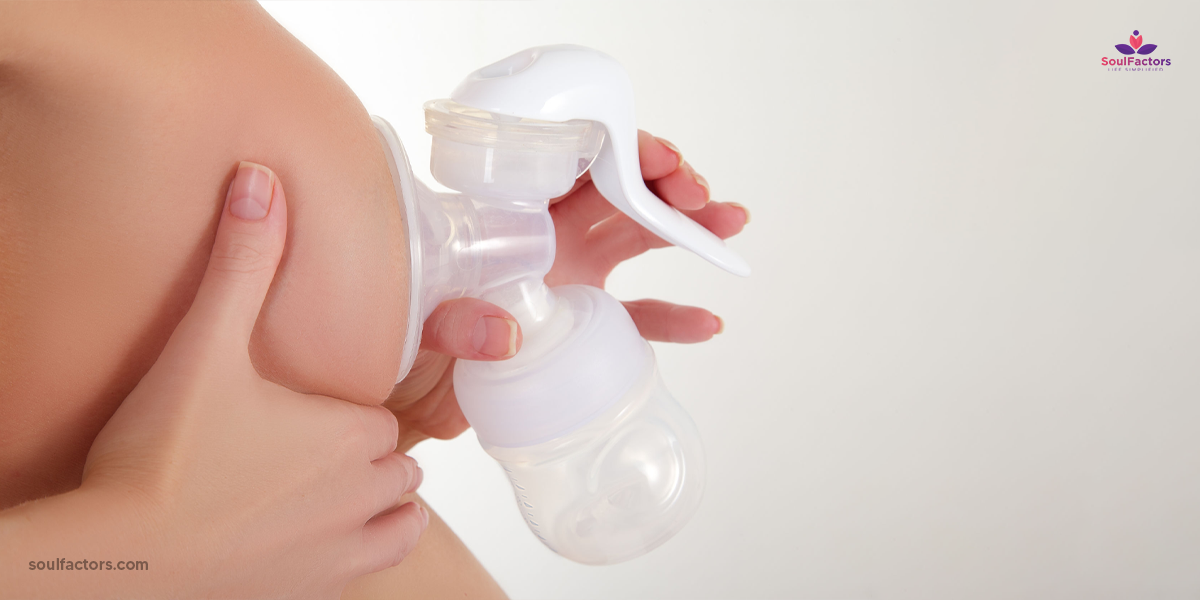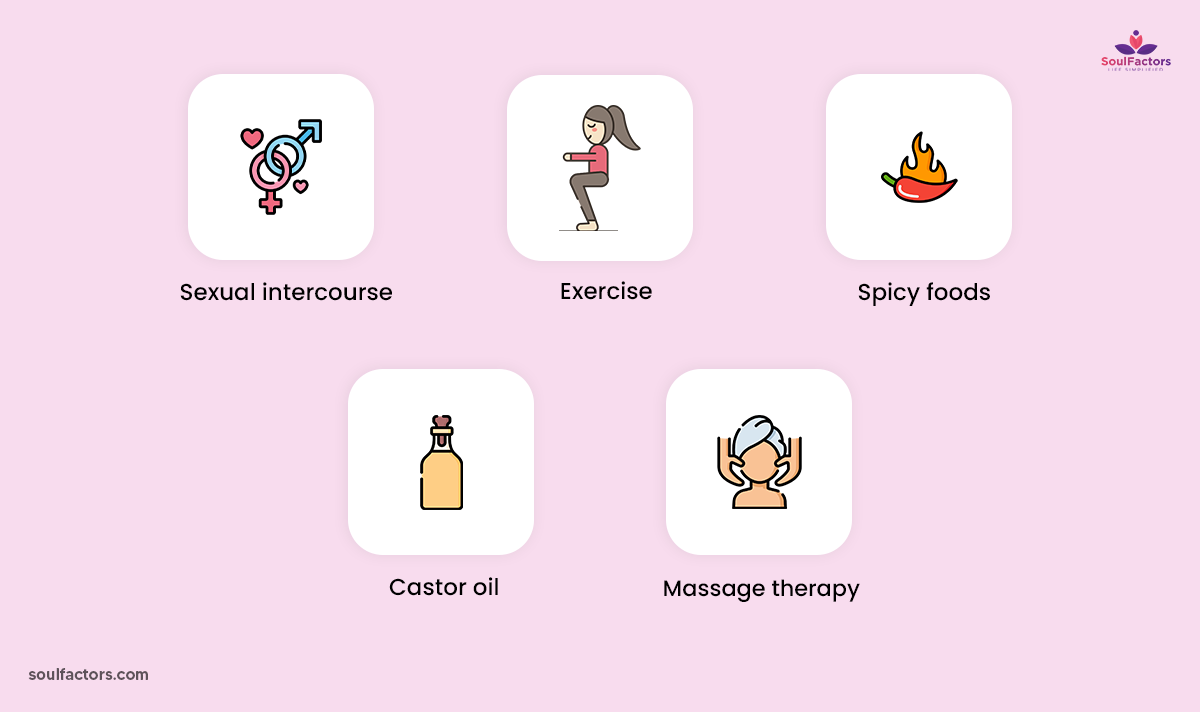How To Stimulate Nipples To Induce Labor: Naturally Nudging Labor!
Here’s nature and science with a gentle technique to welcome your baby into this world!
On Aug 16, 2023 – 10 minutes read

Hello, mommy-to-be! Congratulations on nearing the end of your pregnancy journey. I can only imagine the excitement you must feel as you anticipate meeting your little one. As you approach the final weeks of gestation, or if you’ve already reached the 40-week mark, you may be interested in exploring natural methods to kickstart labor. Among various natural induction techniques, nipple stimulation, or breast stimulation, is a popular choice for many expectant mothers worldwide. If you’re curious about breast stimulation meaning and how to stimulate the nipples to induce labor, stick around until the end as I share everything you need to know about this natural approach to labor induction.
Can Nipple Stimulation Induce Labor?
Before delving into whether nipple stimulation can induce labor, let’s first grasp the concept of inducing labor for pregnant women. While some women naturally go into labor when it’s time for their baby’s arrival, others may not experience the onset of labor even after reaching 40 weeks of gestation. In such cases, doctors and midwives often recommend alternative methods to initiate labor.

Usually, doctors follow safe and proven ways to induce labor, such as the use of medicines or devices. But before the doctor uses labor-inducing medications, some women are inclined to try natural remedies for themselves so they can avert the risks of medical induction like infection or fetal heart rate variations.
At this point, methods such as nipple stimulation become relevant. While the definitive ability of nipple stimulation to induce labor remains uncertain, there exists both scientific research and anecdotal evidence suggesting its potential effectiveness.
The Science Behind The Induction of Labor Through Nipple Stimulation
Physicians frequently administer Pitocin to initiate labor in expectant mothers. Pitocin is essentially a synthetic version of the hormone Oxytocin, which plays various crucial roles in our bodies. From fostering feelings of arousal when in proximity to a partner to fostering an inseparable bond between parent and child, oxytocin orchestrates many physiological processes. Another vital function of oxytocin in a woman’s body is triggering labor when the time for delivery arrives.
This suggests that if, by any means, we are able to increase the levels of oxytocin in the body, it can help in the induction of labor. With this in mind, you can use nipple stimulation to bring on labor or make the contractions stronger, as gently massaging or rolling the nipples is known to release oxytocin in the body.
Scientific Evidence on How to Stimulate Nipples To Induce Labor
Although more clinical studies are necessary to ascertain if stimulating the nipples actually induces labor, some initial studies do point toward its effectiveness.
For instance, a quasi-experimental study was conducted to analyze oxytocin levels in low-risk pregnancies. For three consecutive days, pregnant women participating in the study performed breast stimulation with the aim of inducing labor.
Results revealed that oxytocin levels in their saliva were significantly higher on the third day of stimulation. So, researchers inferred that repeated nipple or breast stimulations could further raise oxytocin levels in the body, which can increase uterine contractions and induce labor.
Another study involved 390 pregnant women who were divided into three groups – the first group practiced nipple stimulation, the second practiced uterine stimulation, and the third was the control group.
Findings revealed that women who engaged in nipple stimulation experienced the shortest phases of childbirth: the first phase lasting 3.8 hours, the second phase lasting 16 minutes, and the third phase lasting only 5 minutes. These results suggest nipple stimulation as a potential method in how to induce labor.
What’s more? None of the women practicing nipple stimulation needed a c-section for their baby’s delivery! So, researchers concluded that nipple stimulation does support vaginal birth through endogenous labor induction.
Nipple Stimulation: A Closer Look At The Right Techniques
How To Stimulate Nipples To Induce Labor With Hands Or Fingers
Here are the steps you can follow to stimulate your nipples with your hands and fingers:
👉 Find yourself a private and comfortable spot where you can relax and ease yourself into the process.
👉 You could either wear a shirt made out of thin fabric or remove your shirt so there’s no hindrance.
👉 Apply a little coconut oil or nipple moisturizer to your breasts for lubrication.
👉 Start by stimulating one breast at a time. Massaging both breasts together can cause overstimulation, which may negatively impact the fetal heart rate.
👉 Use your hand to form a cup around the dark area surrounding your nipples. This is the areola. Babies suck on both the nipple and areola during breastfeeding. So you need to mimic the sucking motion as closely as possible.
👉 Gently massage and press the areola and pull toward the nipple. As you reach the end of the nipple, give it a slight twist before you let it go completely.
👉 Continue this for five minutes, alternating between both breasts, followed by a 15-minute break if you want to repeat it again.
While this technique is quite simple, you may watch one of those “how to stimulate nipples to induce labor” videos available online to get a better idea.
How To Stimulate Nipples To Induce Labor With Breast Pump
A less physically demanding method to stimulate your nipples is to use a breast pump rather than manually using your fingers. Since the arrival of your baby is imminent, you may have already acquired a breast pump to assist with breastfeeding. Here’s how it can serve as a dual-purpose tool for nipple stimulation:

👉 Assemble your breast pump (electric or manual) before you start pumping and stimulating your nipples.
👉 Find a comfortable, quiet, and serene environment to encourage the release of oxytocin. Connect with your baby and envision the special moment when you will finally meet each other.
👉 Turn on the breast pump and pump one breast for 10–15 minutes. Then, switch to the other side and pump for another 10–15 minutes. Be sure to pause whenever you experience a contraction and resume pumping once it subsides.
👉 You can continue switching sides every 15 minutes for close to an hour to stimulate your nipples and facilitate labor induction.
How To Stimulate Nipples To Induce Labor At Home With Your Partner’s Help
If you’re at home and your partner is by your side, why not take his help to elevate your levels of oxytocin? Yes, your partner can very well help to kickstart your baby’s birth. His gentle touch can not only make you feel good and loved, but it will also get things going.
Your partner can help you with nipple stimulation while you sit back and relax. He can do so manually or via oral stimulation, whichever you are comfortable with. Though most women who participated in the studies practiced self-stimulation, there is no harm in involving your partner. His tender touch will relieve you of stress and assist in oxytocin release, which will trigger labor to progress naturally.
The only thing you need to pay attention to is knowing your limitations. So keep communication open while you’re at it. Let him know if you’re uncomfortable at any point. And do remember to take breaks when you feel a contraction. Halt stimulation altogether if your contractions are occurring three or fewer minutes apart or lasting for a minute or longer.
How To Stimulate Nipples To Induce Labor At 37 Or 38 Weeks
Earlier, babies born anywhere between 37 and 42 weeks of gestation were considered to have completed the term. If you’re not aware of the latest updates announced by The American College of Obstetricians and Gynecologists, together with the Society for Maternal-Fetal Medicine, you may think at 37–38 weeks that it’s time for your baby’s arrival. And even consider trying natural ways to speed up the birthing process.
But if that’s what you’ve been thinking, it’s time to correct yourself. According to the updates issued by the two entities, pregnancy is now considered full-term only when it has completed 39 weeks. Any time before 39 weeks is considered early term, and it is noted that babies born before completing full term may have issues with feeding and breathing properly and regulating their body temperature. They also have a higher chance of having a learning disability.
Waiting until 39 weeks ensures that your baby has ample time to develop fully. By this point, your baby will have a well-developed brain, lungs, and liver, and be prepared to embark on a healthy journey in life. Therefore, it’s advisable not to consider methods of nipple stimulation to induce labor unless you have reached the 39–40-week mark.
Other Techniques To Induce Labor Naturally
You may have received suggestions from your friends or family members about alternative methods that helped induce labor for them. While some women try various techniques to initiate labor, it’s important to note that these methods are less researched and lack scientific evidence to support their effectiveness. Therefore, it’s advisable to consult with your healthcare provider before attempting any of these methods. Additionally, don’t be discouraged if you don’t achieve the desired results.

Some common methods, other than nipple stimulation, that women use to induce labor are:
Sexual Intercourse:
When you have sex, oxytocin levels rise in the body. This can help jump-start uterine contractions and take you into labor.
Exercise:
Squatting, walking, or stretching on a birthing ball are good exercises that may induce labor. It is best to exercise regularly during pregnancy so the time you spend in labor is shorter and you deliver quickly and comfortably.
Spicy Foods:
For some, eating spicy foods does the trick. Though science is yet to confirm how you may give this a try unless you are already dealing with heartburn and other stomach issues.
Castor Oil:
This is a commonly used method to trigger labor. However, its use is highly controversial. So, unless you have your doctor’s nod, it’s better to skip this technique. But if they give you a green signal, make sure you learn from them how to use it correctly, as incorrect use can lead to dehydration and other unwanted side effects.
Massage Therapy:
Nothing is more relaxing than getting a nice massage. While we’re not sure if massage can help you go into labor, it sure will relieve your stress during the last phase of pregnancy. So, there’s no harm in getting a massage. You never know what will work for you!
Final Word
Knowing how to stimulate your nipples to induce labor can make you feel empowered and nudge you to take things into your own hands without letting things happen naturally. While it might be tempting to try and stimulate uterine contractions to hasten delivery, particularly when you’re eagerly awaiting the arrival of your bundle of joy after months of anticipation, it’s best to entrust these important decisions to your doctor.
As I told you earlier, there’s a need for more research to establish the effectiveness of nipple stimulation to start labor. So, relying completely on a few early studies is not a good idea. Another thing to note here is that these studies have been conducted on women with low-risk pregnancies. There’s no evidence on how this practice will affect women with high-risk pregnancies. So, if you fall into this category and have been dealing with gestational diabetes, preeclampsia, etc., nipple stimulation is a big ‘NO’ for you.
Ultimately, if you’re considering trying nipple stimulation, it’s crucial to have a discussion with your doctor or midwife and follow their guidance to ensure the safety of both you and your baby. If they approve, proceed with nipple stimulation for a safe and natural initiation of labor. You may also find it helpful to inquire about breast stimulation to induce labor success stories to gain insight into others’ experiences.
Here’s wishing you a joyous and happy birthing experience. You’ve got this, mama!
FAQs
Yes, you can stimulate your nipples to induce labor if your doctor or midwife has given you the go-ahead.
Try not to stimulate your nipples at 37 weeks of gestation because there is an increased risk of stillbirth and the baby developing other neurological problems. This technique is best used after you have completed at least 39 weeks of gestation and you have your doctor’s approval.
Acupuncture, sexual intercourse, hot baths, nipple stimulation, herbal remedies, and foods like dates and pineapple can all help open the cervix naturally.

Subscribe to Newsletter
Elevate your routine, stay on trend, and embrace a personalized beauty journey with our curated insights.





Write a Comment